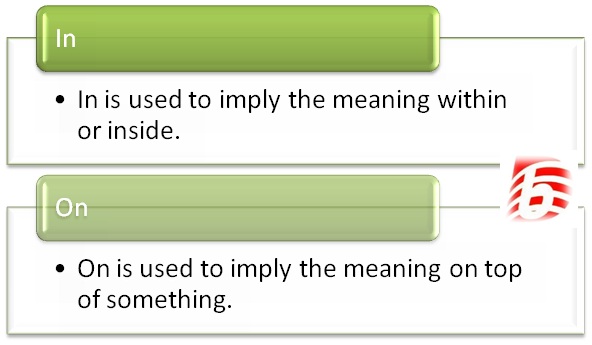The primary distinction between “in” and “on” is how they indicate location. “In” suggests being inside something, while “on” implies being on top of something. Both words are prepositions in English grammar, used to describe a noun in the locative case. It is crucial to understand the difference between “in” and “on” to use these prepositions accurately.
Key Takeaways
- In indicates being inside or within something
- On implies being on top of something
- Both “in” and “on” are prepositions used to describe a noun in the locative case
What Does In Mean?
Consider the following sentence:
The lion is in the den.
In this example, the preposition “in” is used to convey a sense of location. However, “in” defines the location differently than “on.” In fact, the preposition “in” is used to imply the meaning within or inside. In the sentence ‘the lion is in the den’, the idea that is understood is that ‘the lion is inside the den’.
What Does On Mean?
Consider the following sentence:
The book is on the table.
Just as “in” was used earlier in a different sentence, in the sentence given above “on” is used to convey location. You will see that the way “on” defines location is different from the way “in” defines location. In the sentence ‘the book is on the table’, the idea that is understood is that ‘the book is at the top of the table’.
What are the Similarities Between In and On?
- Both “in” and “on” are locative adjectives, indicating location
- Both “In” and “On” are used as adverbs
- Both “in” and “on” are used in phrases, such as “on time” meaning exactly at the given time, and “in time” meaning in advance
What is the Difference Between In and On?
| In | On |
|---|---|
| In is used to imply the meaning within or inside | On is used to imply the meaning on top of something |
| In is both an adverb as well as an adjective | On can not be used as an adverb in all situations (e.g., Cricket, the on side, where “on” is a noun) |
Summary – In vs On
In this manner, both locative adjectives, “in” and “on,” are used differently in different phrases to provide different meanings. The difference between “in” and “on” is that “in” indicates inside something while “on” indicates on the top of something. It is essential to know that these two words combine very well with various verbs to give varied meanings. Now, you can understand that the location is defined differently by the two prepositions “in” and “on.”
